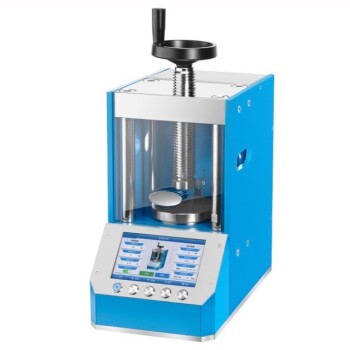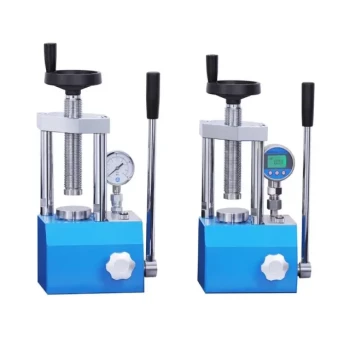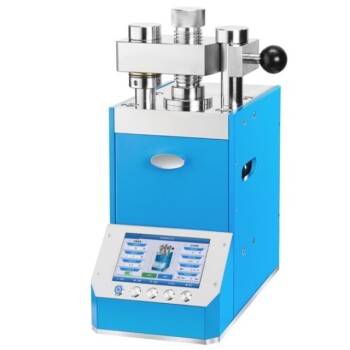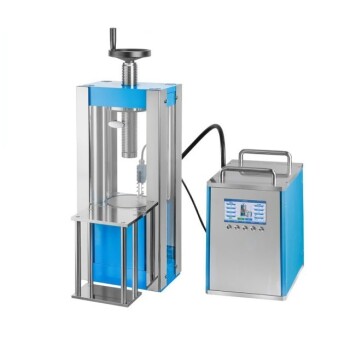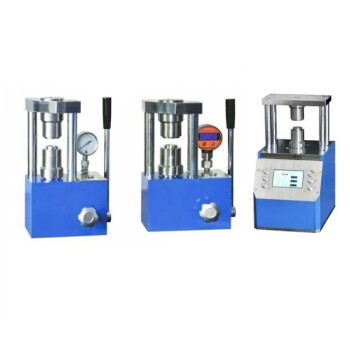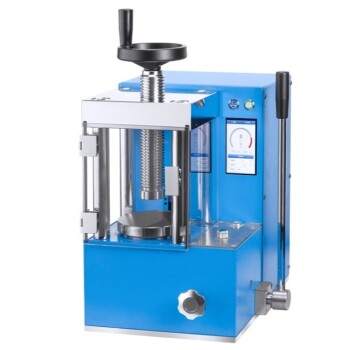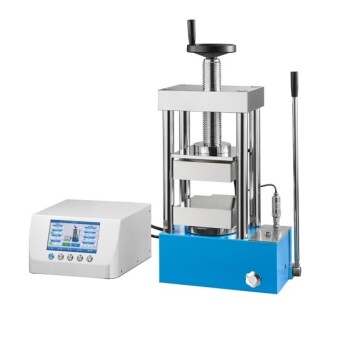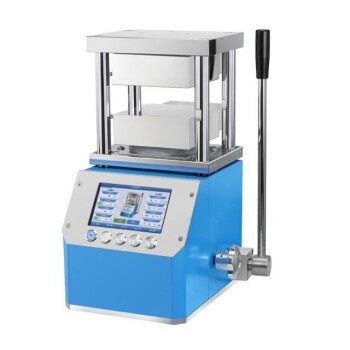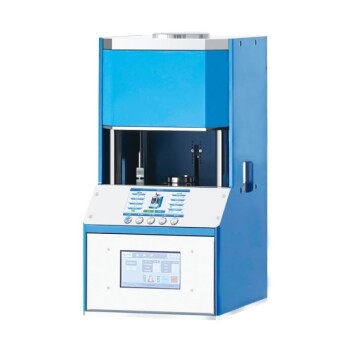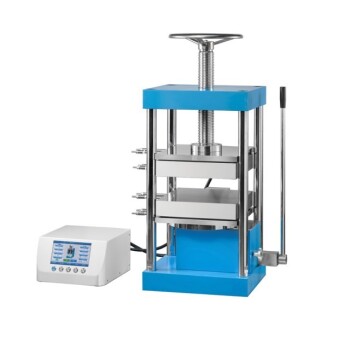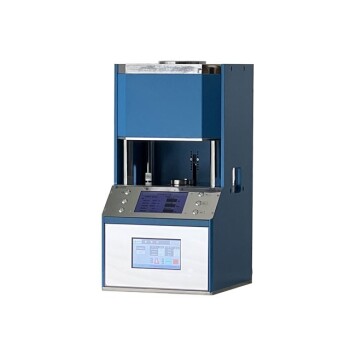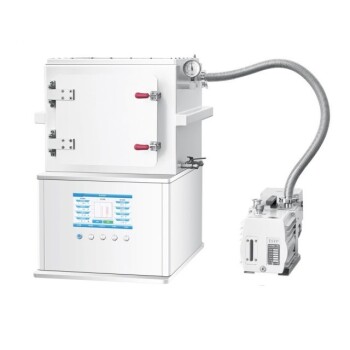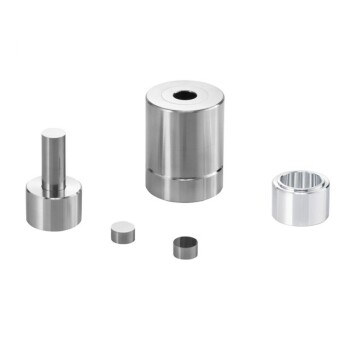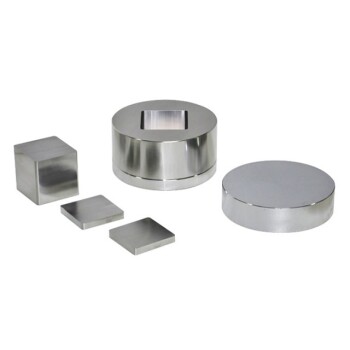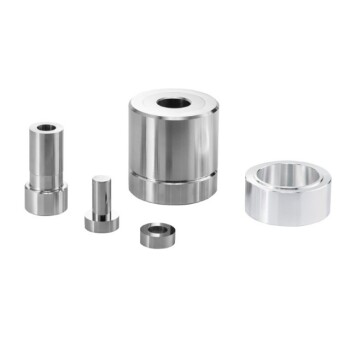It's a scene that plays out in labs everywhere. You’ve spent the last hour meticulously grinding a sample, mixing it with KBr, and carefully loading it into your hydraulic press. You apply the pressure, release, and... a cracked, opaque pellet. Or worse, it looks perfect, but the FTIR spectrometer gives you a noisy, unusable baseline. Hours of work are down the drain, and you have to start all over again, wondering what you did wrong.
The Vicious Cycle of Trial, Error, and Wasted Resources
If this sounds familiar, you're not alone. This struggle with sample preparation is a chronic source of frustration and inefficiency. Faced with inconsistent results, most scientists and technicians begin a process of troubleshooting that feels like guesswork:
- "Maybe I'll press a little harder this time."
- "Maybe I'll press more slowly."
- "Let's bake the KBr powder overnight to make sure it's dry."
- "I'll adjust the sample-to-binder ratio, again."
Each attempt consumes valuable time, expensive materials, and the patience of your team. The business consequences are significant and measurable. A single afternoon of failed sample prep can delay a critical quality control report, push back a project timeline, and cast doubt on the integrity of your lab's data. When you can't rely on your most basic preparation tools, you can't build a foundation for reliable discovery or manufacturing.
It’s Not You, It’s the Pressure: The Real Root Cause
Here is the turning point: The problem is rarely your technique, your recipe, or your luck. The hidden culprit behind your inconsistent results is uncontrolled force.
The quality of a sample pellet for spectroscopic analysis (like FTIR or XRF) depends on achieving uniform density and a flawless, glass-like surface. This requires more than just reaching a target pressure; it demands absolute control over how that pressure is applied, held, and released.
Why Common "Fixes" Don't Work
Many conventional or older manual presses are blunt instruments. They are good at generating force, but poor at regulating it. Here’s why your troubleshooting often fails:
- Human Variability: On a manual press, "10 tons" of pressure is different depending on the operator, their strength, and even the time of day. This inconsistency is directly transferred to your sample.
- Pressure Spikes & Drifts: Without precise control, the pressure can spike suddenly or drift while being held. This introduces internal stress lines and micro-fractures into the pellet—often invisible to the naked eye—that scatter the spectrometer's light beam and ruin your analysis.
Trying to perfect your grinding technique or material ratios is like trying to bake a perfect cake in an oven with a broken thermostat. You are addressing the symptoms, not the fundamental problem of an unstable environment.
From Uncontrolled Force to Absolute Precision
To permanently solve the problem of inconsistent pellets, you must eliminate the variable of uncontrolled force. You need a tool that was not just built to be strong, but engineered for repeatability and precision.
This is the core design philosophy behind KINTEK's automatic laboratory presses. They are not simply a stronger version of a manual press; they are a sophisticated instrument designed to master the very variable that causes failure.
Our automatic presses directly address the root cause of inconsistency:
- Programmable Control: Instead of guessing, you can program the exact target pressure, the rate at which it's applied (the ramp rate), and the precise duration it's held. This removes all operator-dependent variability.
- Automated Repeatability: Once you find the perfect parameters for a specific material, you can save it as a method. Every subsequent sample will be prepared under the exact same conditions, guaranteeing consistent pellet quality. The first pellet is perfect, and so is the hundredth.
A KINTEK automatic press transforms sample preparation from an art of "feel" into a science of controlled, repeatable manufacturing. It's the solution designed with a deep understanding of why samples fail in the first place.
Beyond Reliable Samples: What Unlocked Precision Means for Your Lab
When you are no longer fighting with your equipment, you unlock new potential. The time your skilled analysts once spent on repetitive re-work can now be re-invested where it truly matters.
With the confidence that every sample is prepared perfectly, you can:
- Dramatically Increase Throughput: Prepare more samples in a single morning than you previously could in a full day of trial and error.
- Trust Your Data: Eliminate questionable results caused by poor sample quality, leading to faster R&D cycles and more reliable QC reports.
- Tackle Advanced Applications: Confidently work with more challenging, brittle, or sensitive materials that were previously too difficult to prepare consistently.
- Empower Your Team: Allow your scientists to focus on high-value tasks like data interpretation and discovery, not on basic, frustrating manual labor.
Solving the "old problem" of sample prep doesn't just make one task easier; it elevates the capacity and reliability of your entire laboratory.
Your lab's success depends on the quality of its data, which starts with the quality of its samples. If you're ready to move past the daily struggle with inconsistent results and unlock a new level of efficiency and confidence, our team is here to help you find the right tool for the job. Let's discuss your specific applications and challenges. Contact Our Experts.
Related Products
- Automatic Laboratory Hydraulic Press Lab Pellet Press Machine
- Manual Laboratory Hydraulic Press Lab Pellet Press
- Manual Laboratory Hydraulic Pellet Press Lab Hydraulic Press
- Automatic Laboratory Hydraulic Press for XRF and KBR Pellet Pressing
- Laboratory Hydraulic Press Lab Pellet Press Machine for Glove Box
Related Articles
- How Warm Isostatic Pressing Optimizes Material Performance for Industrial Applications
- How to Choose a Laboratory Hot Press for Precise Material Processing
- Why Your High-Performance Parts Are Failing—And How to Fix It at the Source
- How KBr Press Components Work Together for Flawless Sample Preparation
- How Warm Isostatic Pressing Transforms High-Performance Manufacturing
